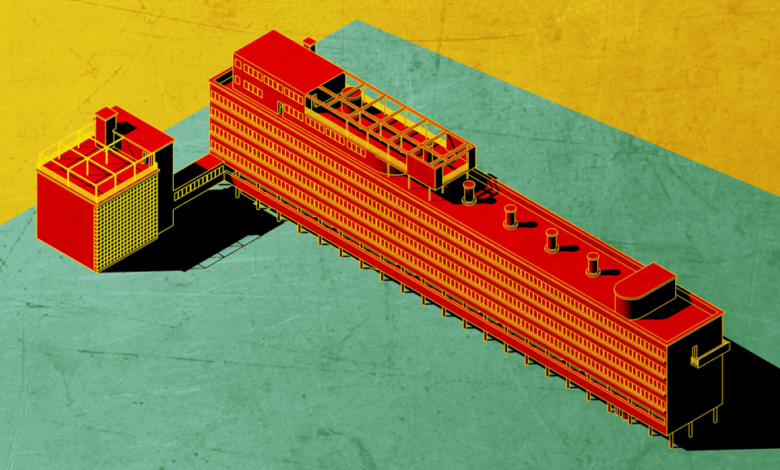The Social Condensers: Revolutionizing Architecture for Collective Living

Table of Contents
Social Condensers are a revolutionary idea in architecture that aim to change how we live and interact with each other. The term “social condensers” refers to buildings designed with the goal of promoting social interaction and equality. They were first introduced in Soviet Russia in the early 20th century, inspired by the ideas of social and collective living. These buildings focus on creating spaces that encourage shared activities and remove the divide between public and private areas.
The main idea behind social condensers is that architecture should influence how people behave. By designing spaces that bring people together, these buildings help create a sense of community. The goal is to remove traditional social barriers and promote collective activities that benefit everyone. Social condensers are not just about design but about making a better, more connected society.
What Are Social Condensers? Understanding the Concept

Social Condensers are special types of buildings that were created to bring people together. These buildings were designed with the idea that architecture can influence how we interact with each other. The main goal of social condensers is to make spaces where people live, work, and play more connected. They break down the usual barriers that separate private and public life. This helps create a stronger sense of community.
In these buildings, the spaces are planned to encourage social activities. For example, instead of having private kitchens, social condensers might have shared spaces like communal kitchens or gyms. This allows people to interact and work together, building relationships. Social condensers aim to change how people live by focusing on collective living instead of private, individual experiences.
How Social Condensers Help Build Stronger Communities
Social Condensers play an important role in creating stronger communities. They do this by encouraging people to live and interact together. By offering communal spaces, these buildings promote teamwork and collaboration. People who live in social condensers are more likely to build friendships, share resources, and help each other out.
The design of social condensers promotes a sense of equality. Since everyone shares common spaces, no one feels left out or isolated. In this way, social condensers make it easier for people to connect with their neighbors. These buildings help create a community where everyone can feel included, no matter their background or social status.
The History of Social Condensers in Soviet Architecture

The idea of social condensers started in Soviet Russia, around the 1920s. The Soviet government wanted to create a new way of living after the revolution, focusing on collective experiences instead of individualism. This led to the creation of social condensers, which were seen as a way to bring people together.
The most famous example of a social condenser is the Narkomfin building in Moscow. This building, started in 1928, is one of the first examples of this architectural style. Designed by Moisei Ginzburg, the Narkomfin building had shared spaces for people to live and work together, reflecting the goals of Soviet constructivism. Over time, social condensers became a symbol of the Soviet desire to create a more equal society.
Key Features of Social Condensers: More Than Just Buildings
Social Condensers are not just about physical structures. They have features that encourage social interaction and shared experiences. One key feature of social condensers is the focus on communal spaces. These can include shared kitchens, gyms, or even libraries. By eliminating private spaces, social condensers promote interaction and equality among residents.
Another feature of social condensers is their use of simple, functional designs. Instead of having decorative elements, social condensers focus on practicality. The buildings are often designed with straight lines and open spaces to support collective living. These features help create an environment that is both efficient and socially connected, which is the main goal of a social condenser.
Breaking Down Barriers: How Social Condensers Promote Equality

Social Condensers are built to remove the barriers that separate people based on social or economic status. By providing shared spaces for living and working, these buildings promote equality among residents. Everyone has access to the same facilities, which helps eliminate the idea of private wealth or status.
In social condensers, the focus is on creating a shared experience. Whether it’s a communal kitchen or a meeting room, these spaces are meant to encourage interaction among everyone. This fosters a sense of belonging and removes the social hierarchies that are often present in traditional housing.
Conclusion
In conclusion, Social Condensers are a unique way of designing buildings to encourage people to interact and build stronger communities. By focusing on shared spaces rather than private ones, these buildings help break down social barriers and promote equality.
While Social Condensers were first popular in Soviet Russia, their influence continues to be seen in modern architecture. These buildings show how architecture can be used to shape social behavior and create a sense of community.
FAQs
Q: What is a Social Condenser?
A: A Social Condenser is a type of building designed to encourage people to live and work together in shared spaces, promoting community and equality.
Q: Where did Social Condensers first appear?
A: Social Condensers first appeared in Soviet Russia in the 1920s, as part of a movement to create collective living spaces after the revolution.
Q: Why are Social Condensers important today?
A: Social Condensers are important today because they help build stronger communities by encouraging people to interact and reduce feelings of isolation in cities.
Q: What are some features of Social Condensers?
A: Some features of Social Condensers include communal kitchens, gyms, and libraries, designed to bring people together and promote social interaction.
Q: How do Social Condensers affect social behavior?
A: Social Condensers help people work together and form stronger bonds with neighbors, encouraging teamwork and reducing competition in the community.




